
Free learning recommendation: java basic tutorial
- 1. User interaction Scanner
- 2. Sequential structure
- 3. Selection structure
- if radio selection structure
- if double selection structure
- if multiple selection structure
- Nested if structure
- switch multiple selection structure
1. User interaction Scanner
- In the basic syntax we learned before, we did not realize the interaction between programs and people, but Java We are provided with such a tool class that we can obtain user input. java.util.Scanner is a new feature of Java5.
We can obtain user input through the Scanner class - Basic syntax
Scanner?s?=?new?Scanner(System.in);
- Through Scanner The next() and nextLine() methods of the class obtain the input string. Before reading, we generally need to use hasNext() and hasNextLine() to determine whether there is still input data.
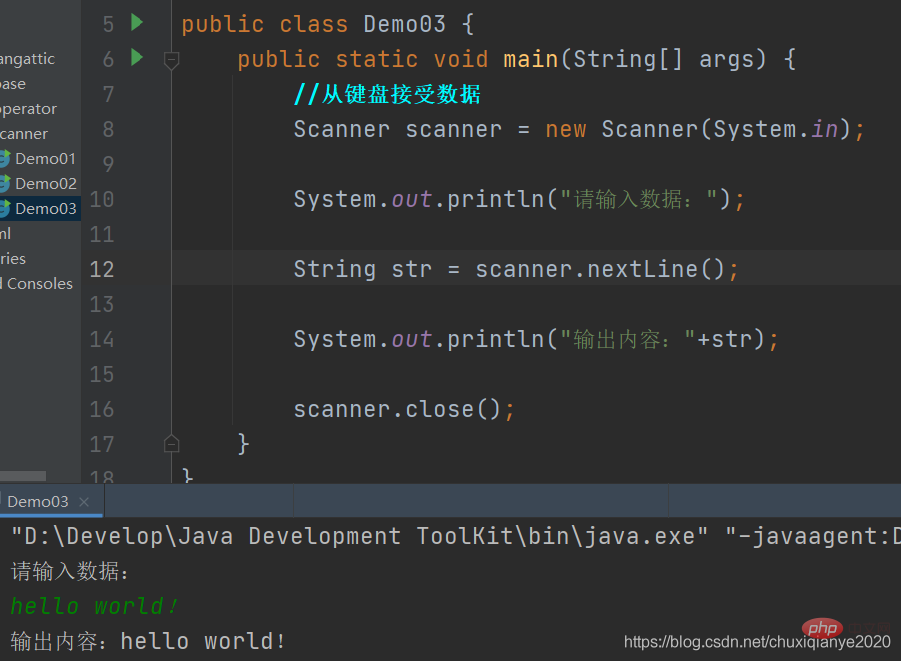
Remember to enter scanner.close() at the end of the program to close the scanner and reduce resource usage
2. Sequential structure
- The basic structure of JAVA is the sequential structure. Unless otherwise stated, it will be executed sentence by sentence in order.
- Sequential structure is the simplest structure algorithm.
- Between statements and between boxes are carried out in order from top to bottom. It is composed of several processing steps that are executed in sequence.
It is the best choice for any short hair. A basic algorithmic structure that cannot be separated.
3.Select structure
if single choice structure
We often need to judge whether something is feasible, and then we execute it. Such a process is represented by an if statement in the program
Grammar
if(布爾表達(dá)式){
????//如果布爾表達(dá)式為true將執(zhí)行的語句}

if double choice structure
Scenario: The company wants to acquire a software, it succeeds: It pays 1 million yuan to someone, it fails : Find someone to develop it yourself.
In this scenario, it is impossible to use an if. We need two judgments and a double selection structure (
if-else)
Grammar:
if(布爾表達(dá)式){
????//如果布爾表達(dá)式的值為true}else{
????//如果布爾表達(dá)式的值為false}

if multiple choice structure
Scenario: Possible real situation Possible There are multiple choices such as ABCD, and there are multi-level judgments in intervals. For example, 90-100 is A, 80-90 is B..., many times in life we ??have more than just two choices, so we need a multi-choice structure to deal with such problems!
Syntax:
if(布爾表達(dá)式1){
????//如果布爾表達(dá)式?1的值為true,則執(zhí)行}else?if(布爾表達(dá)式2){
????//如果布爾表達(dá)式?2的值為true,則執(zhí)行}else?if(布爾表達(dá)式3){
????//如果布爾表達(dá)式?3的值為true,則執(zhí)行}else{
????//如果以上布爾表達(dá)式都不為true,執(zhí)行代碼}
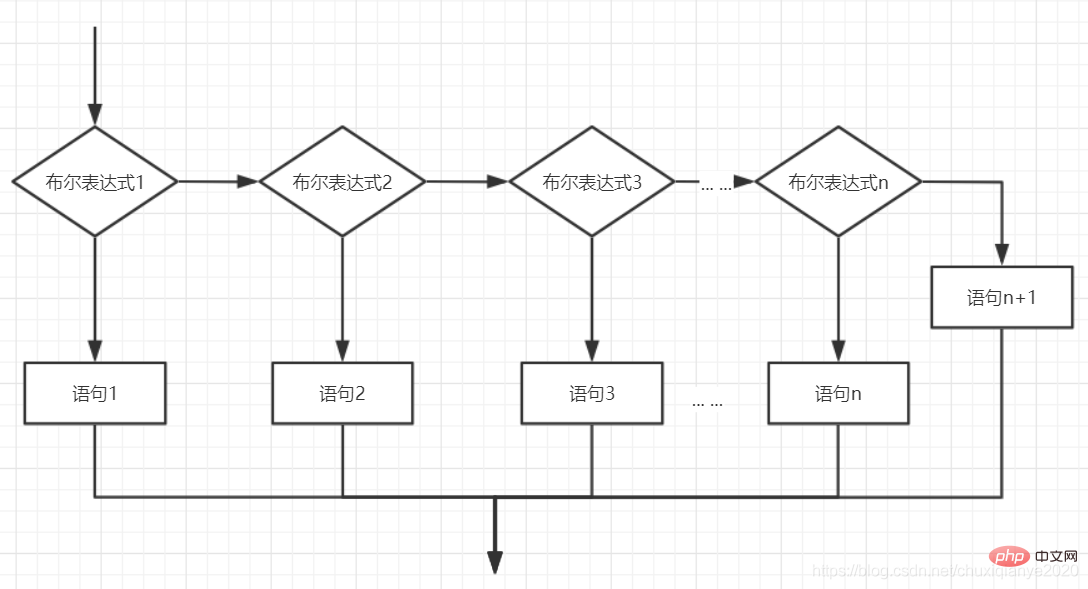
Nested if structure
It is legal to use nested if...else statements. This means you can use an if or else if statement within another if or else if statement. You can nest else if...else like if statements.
Grammar:
if(布爾表達(dá)式1){
????//如果布爾表達(dá)式?1的值為true,執(zhí)行
????if(布爾表達(dá)式2){
????????//如果布爾表達(dá)式?2的值為true,執(zhí)行
????}}
Thinking? We need to find a number between 1-100 (hint: dichotomy)
switch multiple selection structure
- multiple Another implementation of the selection structure is the switch case statement.
- The switch case statement determines whether a variable is equal to a value in a series of values, and each value becomes a branch.
- The variable type in the switch statement can be:
- byte, short, int or char
Starting from Java SE 7, switch The String type is supported- At the same time, the case label must be a string constant or literal.
switch(expression){
????case?value:
????????//語句
????????break;
????case?value:
????????//語句
????????break;
????//你可以有任意數(shù)量的case語句
????default://可選????????//語句}
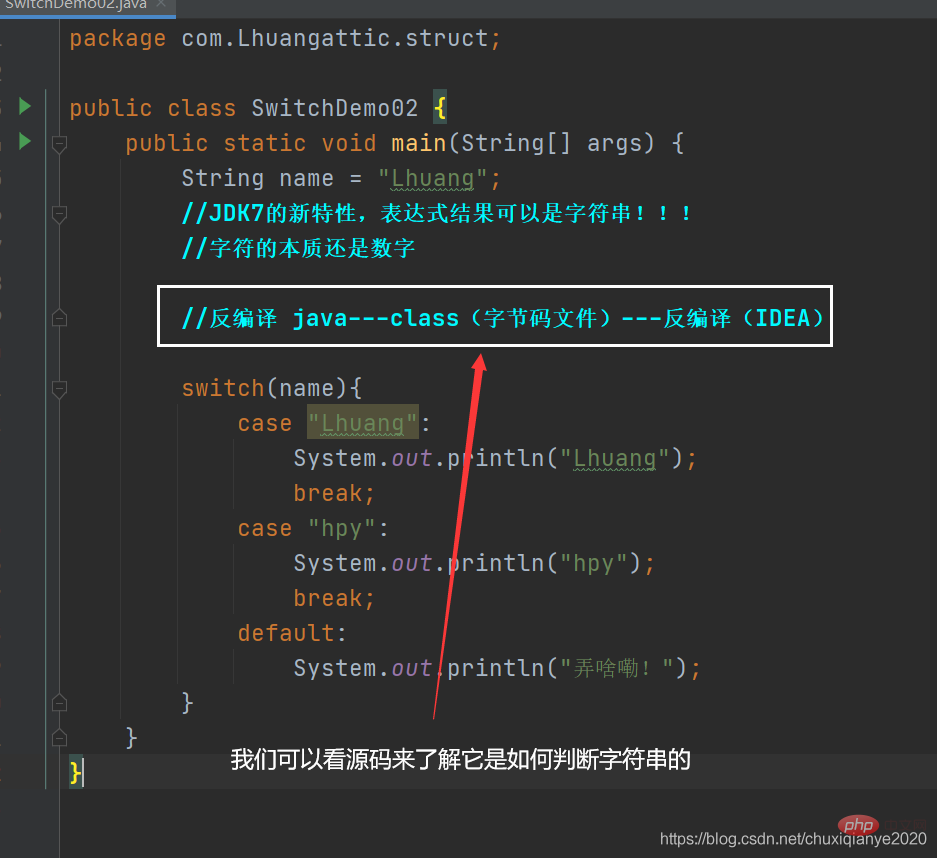
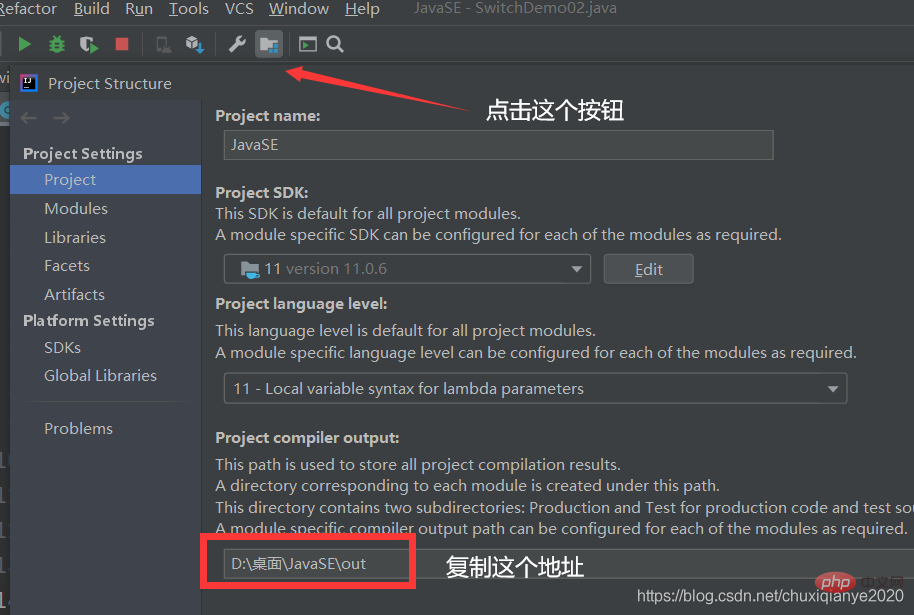

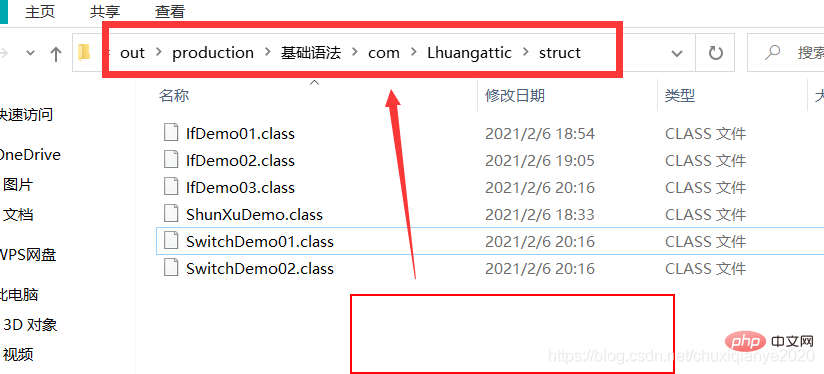
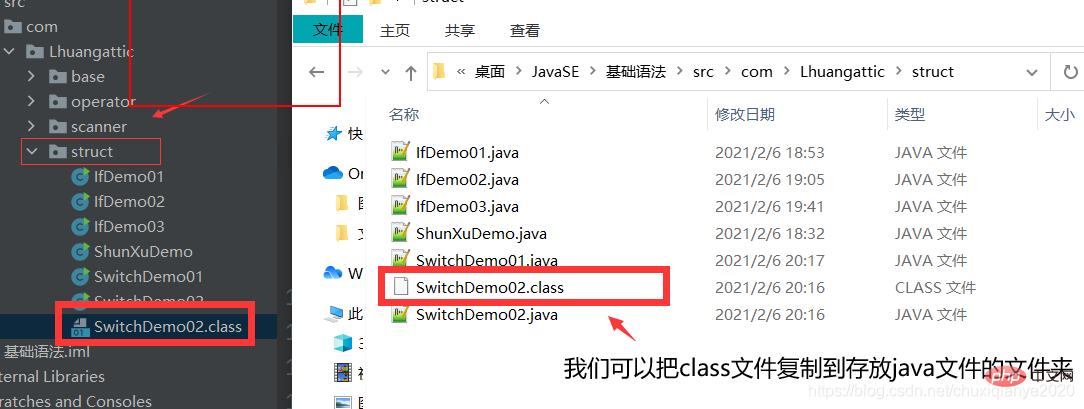
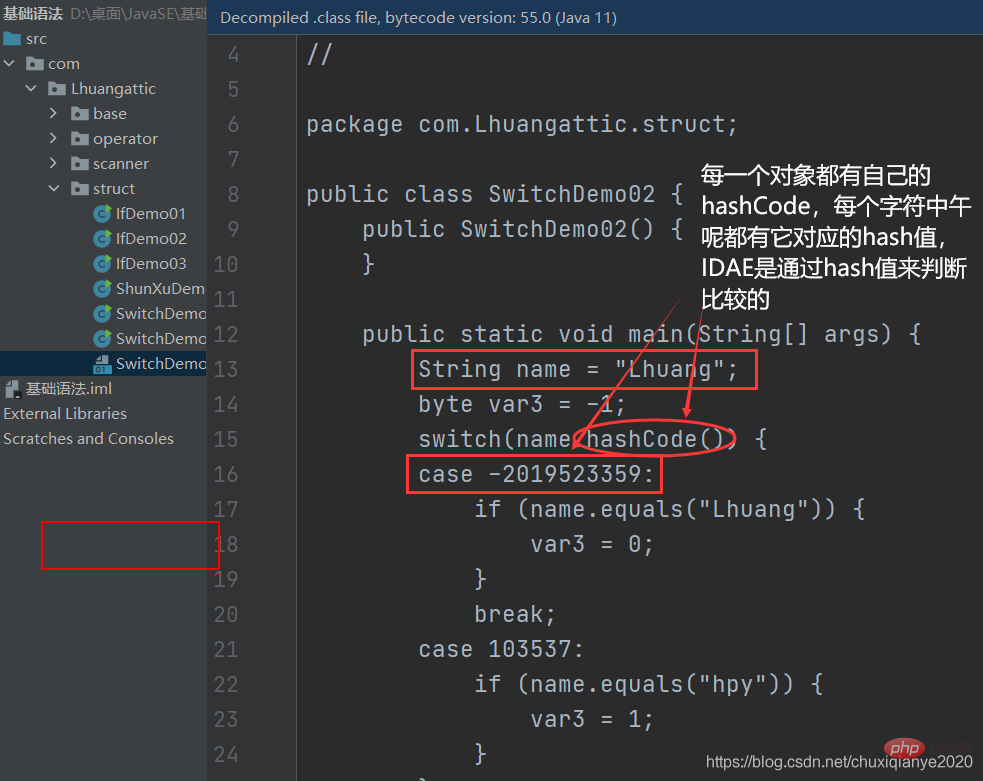
Summary:
Each object has its own hashCode, each Chinese character has its corresponding hash value, and then IDEA uses the hash value to Judgment and comparison
After the code is compiled, the bytecode is executed like this (above picture)
Directly throw the class file to You can view its source code in IDEA (a simple and violent decompilation method). If you want to download some other decompilation tools, you can Baidu
to see more source code!
More related learning recommendations: java basics
The above is the detailed content of Introduction to Java Process Control. For more information, please follow other related articles on the PHP Chinese website!

Hot AI Tools

Undress AI Tool
Undress images for free

Undresser.AI Undress
AI-powered app for creating realistic nude photos

AI Clothes Remover
Online AI tool for removing clothes from photos.

Clothoff.io
AI clothes remover

Video Face Swap
Swap faces in any video effortlessly with our completely free AI face swap tool!

Hot Article

Hot Tools

Notepad++7.3.1
Easy-to-use and free code editor

SublimeText3 Chinese version
Chinese version, very easy to use

Zend Studio 13.0.1
Powerful PHP integrated development environment

Dreamweaver CS6
Visual web development tools

SublimeText3 Mac version
God-level code editing software (SublimeText3)
 VSCode settings.json location
Aug 01, 2025 am 06:12 AM
VSCode settings.json location
Aug 01, 2025 am 06:12 AM
The settings.json file is located in the user-level or workspace-level path and is used to customize VSCode settings. 1. User-level path: Windows is C:\Users\\AppData\Roaming\Code\User\settings.json, macOS is /Users//Library/ApplicationSupport/Code/User/settings.json, Linux is /home//.config/Code/User/settings.json; 2. Workspace-level path: .vscode/settings in the project root directory
 How to handle transactions in Java with JDBC?
Aug 02, 2025 pm 12:29 PM
How to handle transactions in Java with JDBC?
Aug 02, 2025 pm 12:29 PM
To correctly handle JDBC transactions, you must first turn off the automatic commit mode, then perform multiple operations, and finally commit or rollback according to the results; 1. Call conn.setAutoCommit(false) to start the transaction; 2. Execute multiple SQL operations, such as INSERT and UPDATE; 3. Call conn.commit() if all operations are successful, and call conn.rollback() if an exception occurs to ensure data consistency; at the same time, try-with-resources should be used to manage resources, properly handle exceptions and close connections to avoid connection leakage; in addition, it is recommended to use connection pools and set save points to achieve partial rollback, and keep transactions as short as possible to improve performance.
 Mastering Dependency Injection in Java with Spring and Guice
Aug 01, 2025 am 05:53 AM
Mastering Dependency Injection in Java with Spring and Guice
Aug 01, 2025 am 05:53 AM
DependencyInjection(DI)isadesignpatternwhereobjectsreceivedependenciesexternally,promotingloosecouplingandeasiertestingthroughconstructor,setter,orfieldinjection.2.SpringFrameworkusesannotationslike@Component,@Service,and@AutowiredwithJava-basedconfi
 python itertools combinations example
Jul 31, 2025 am 09:53 AM
python itertools combinations example
Jul 31, 2025 am 09:53 AM
itertools.combinations is used to generate all non-repetitive combinations (order irrelevant) that selects a specified number of elements from the iterable object. Its usage includes: 1. Select 2 element combinations from the list, such as ('A','B'), ('A','C'), etc., to avoid repeated order; 2. Take 3 character combinations of strings, such as "abc" and "abd", which are suitable for subsequence generation; 3. Find the combinations where the sum of two numbers is equal to the target value, such as 1 5=6, simplify the double loop logic; the difference between combinations and arrangement lies in whether the order is important, combinations regard AB and BA as the same, while permutations are regarded as different;
 Troubleshooting Common Java `OutOfMemoryError` Scenarios
Jul 31, 2025 am 09:07 AM
Troubleshooting Common Java `OutOfMemoryError` Scenarios
Jul 31, 2025 am 09:07 AM
java.lang.OutOfMemoryError: Javaheapspace indicates insufficient heap memory, and needs to check the processing of large objects, memory leaks and heap settings, and locate and optimize the code through the heap dump analysis tool; 2. Metaspace errors are common in dynamic class generation or hot deployment due to excessive class metadata, and MaxMetaspaceSize should be restricted and class loading should be optimized; 3. Unabletocreatenewnativethread due to exhausting system thread resources, it is necessary to check the number of threads, use thread pools, and adjust the stack size; 4. GCoverheadlimitexceeded means that GC is frequent but has less recycling, and GC logs should be analyzed and optimized.
 python pytest fixture example
Jul 31, 2025 am 09:35 AM
python pytest fixture example
Jul 31, 2025 am 09:35 AM
fixture is a function used to provide preset environment or data for tests. 1. Use the @pytest.fixture decorator to define fixture; 2. Inject fixture in parameter form in the test function; 3. Execute setup before yield, and then teardown; 4. Control scope through scope parameters, such as function, module, etc.; 5. Place the shared fixture in conftest.py to achieve cross-file sharing, thereby improving the maintainability and reusability of tests.
 How to work with Calendar in Java?
Aug 02, 2025 am 02:38 AM
How to work with Calendar in Java?
Aug 02, 2025 am 02:38 AM
Use classes in the java.time package to replace the old Date and Calendar classes; 2. Get the current date and time through LocalDate, LocalDateTime and LocalTime; 3. Create a specific date and time using the of() method; 4. Use the plus/minus method to immutably increase and decrease the time; 5. Use ZonedDateTime and ZoneId to process the time zone; 6. Format and parse date strings through DateTimeFormatter; 7. Use Instant to be compatible with the old date types when necessary; date processing in modern Java should give priority to using java.timeAPI, which provides clear, immutable and linear
 Understanding the Java Virtual Machine (JVM) Internals
Aug 01, 2025 am 06:31 AM
Understanding the Java Virtual Machine (JVM) Internals
Aug 01, 2025 am 06:31 AM
TheJVMenablesJava’s"writeonce,runanywhere"capabilitybyexecutingbytecodethroughfourmaincomponents:1.TheClassLoaderSubsystemloads,links,andinitializes.classfilesusingbootstrap,extension,andapplicationclassloaders,ensuringsecureandlazyclassloa






